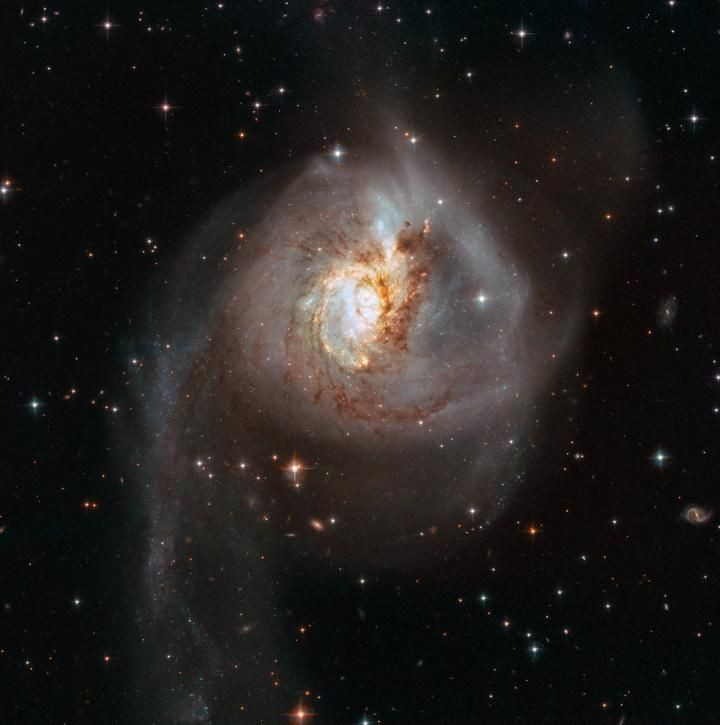Hubble Captures Star-Forming Relic Created From Galaxies Clashing 500 Million Years Ago

Scientists using NASA and European Space Agency’s Hubble Space Telescope have released a new image of an ancient cosmic relic that shows remains of a violent galactic clash, one that occurred some 500 million years ago between two massive spiral galaxies.
The relic, dubbed NGC 3256, is essentially a distorted galaxy sitting some 100 million light-years away from Earth in the constellation Vela (The Sails). In the image, taken with Hubble's Wide Field Camera 3 and the Advanced Camera for Surveys, the galaxy looks like a rose in the darkness of the cosmos, but in reality, is nearly as big as our Milky Way and is still bearing the marks of the chaotic collision.
According to a release, the galaxies that formed this peculiar relic were rich in gas and had nearly same masses. So, when they started colliding, the initial encounter had equal influence on both parties involved. Dust and gas from both galaxies started interacting, leading to the formation of young blue stars that can be seen in the extended luminous tails sprawling out of the distorted galaxy — another result outcome of the encounter.
Galactic mergers are so massive that in the most of the cases, the stars these galaxies host do not collide due to the vast distances involved. However, the interaction between gas and dust leads to starbust or intense star-formation activity. This is what NGC 3256, which currently hosts several infant stars born in groups and clusters, witnessed in the wake of the collision.
Scientists believe the galactic relic hosts more than a thousand bright star clusters. These young stellar bodies shine spectacularly in far-infrared wavelength, giving astronomers a nice, clear look at the distorted galaxy and its tails.
However, this isn’t the only feature of the galactic relic. The bright, central region of NGC 3256 plays host to crisscrossing threads of dark dust and a massive disc of molecular gas that spins around two separate nuclei, those belonging to the galaxies that collided. Only one of the nuclei is commonly seen, while the other remains obscured unless seen in radio, infrared, or X-ray.
That said, it can be noted the merger is still not complete. The spiral disc of the two original galaxies have mixed up, but the nuclei are still distinct and will take a few hundred million years or more to merge. When this happens, the collision will be completed and the NGC 3256 will turn into a large elliptical galaxy.
For years, scientists have been keeping an eye on NGC 3256 because of the ongoing merger and intense star formation activity. Crucially, the face-on orientation of the galaxy also helped with the observations, giving a full look at the disc. Scientists believe observations like these, revolving around starbusts triggered by galactic mergers, could improve our understanding of young stellar clusters.
© Copyright IBTimes 2025. All rights reserved.





















